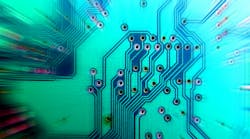For certain vertical markets, the shortening semiconductor lifecycle may be the largest procurement headache for integrated circuit users. In defense, aerospace, industrial and automotive industries, products are manufactured and supported for decades. The handful of years that the average chip is built just isn’t sufficient. Careful planning and building the right relationships with a partner who has the experience and connections to extend product lifecycles is the best and perhaps the only way to succeed.
The average lifespan of semiconductors is being shortened by several realities in the current market, including:
• Continuing merger and acquisition activity among semiconductor suppliers. When companies are combined, often the first order of business is to consolidate the number of SKUs being manufactured which might put a critical product on the chopping block.
• New technology innovations cannibalize manufacturing capacity and put older products on the list of devices at end-of-life (EOL). Chip makers upgrade equipment to make faster, smaller components and inhibit the ability to make mature products.
This combination of lost capacity and underinvestment means that some OEMs are facing a big hole in their product procurement strategy. An increasing number of product change notifications (PCN) and EOL notices combined with shrinking lead times for last time buy and last time ship notifications create a difficult challenge.
Careful planning and procurement combined with thoughtful forecasting and design decisions can mitigate these challenges but are not a long-term solution to the EOL part problem. Once stockpiled chips are used up, the OEM is back to facing an expensive redesign, buying from the gray market or other unknown sources to get the parts they need.
In some cases, the best mitigation strategy is to explore extended manufacturing options with a trusted partner. Too often, customers dismiss the option of extended manufacturing without enough consideration. They worry that it will be too expensive or are unsure of how to calculate the cost-benefit ratio.
It’s true that per part pricing is often a little higher than the original. At the same time, OEMs can save a lot by avoiding the considerable cost of product redesign or the time and effort spent qualifying a new part from a new source. Shifting or halting a supply chain is costly—and that can make extended manufacturing a cost-effective alternative. Sometimes, users are concerned that the product may not meet quality requirements. Extending manufacturing done appropriately uses the same manufacturing flow, foundries, mask set, assembly and test house as the original component manufacturer (OCM). Apart from the manufacturer’s logo, the resulting parts are identical, both physically and electrically.
The key to success is identifying a business case that makes sense for all three involved parties: OCM, customer and a third-party manufacturer. Often, for a general commodity such as memory or standard logic, extending manufacturing won’t offer the right cost-benefit ratio. Extended manufacturing works well in a variety of scenarios, including:
•High value, low volume: Customers that need several dozen of a high value part.
•Lower value, high volume: Customers that need a large volume (thousands) of a semiconductor.
•Specific footprint: A product with a unique pin-out that makes a pin-compatible drop-in replacement impossible.
•Long term: A customer that is manufacturing a product that will need parts fulfillment for several more years.
Extended manufacturing can prolong the life of the end product by avoiding costly redesigns. The IC manufacturer may be willing to offload production of an older part in order to service customers without investing the resources required to continue production. By working with a partner, OEMs can get a source for semiconductor devices manufactured using the same supply chain and tooling as the original manufacturer.
The benefits are measurable and ongoing. The OEM can continue to get the components they need while avoiding a complicated and costly redesign of the end product or a time-consuming search for a new and trustworthy source. In addition, the strategy provides access to data sheet compliant semiconductor components for years into the future. In reality, the product becomes virtually future proof in a way that can never be achieved with an OCM partner.
As a downside, the per-device cost may be a little bit higher under an extended manufacturing model. However, those costs are negligible compared to the complexity and cost involved in a redesign. Within the right context, extended manufacturing is a better solution. In the absence of drop-in replacement or secondary source of supply, extended manufacturing provides a long-term alternative for semiconductor device supply.
By Duker Dapper, Vice President & General Manager, Resurgent Manufacturing Services, a Flip Electronics company.
Duker Dapper started his career as a product engineer at Cypress Semiconductor. He progressed through roles of increasing responsibility in engineering, operations and business unit management during his 30+ years in the semiconductor industry. In 2017, Dapper founded Resurgent Semiconductor with a mission of providing extended lifecycles for semiconductor components. In January 2023, Resurgent was acquired by Flip Electronics. Dapper is currently the General Manager of Resurgent Manufacturing Services, a wholly owned subsidiary of Flip.








